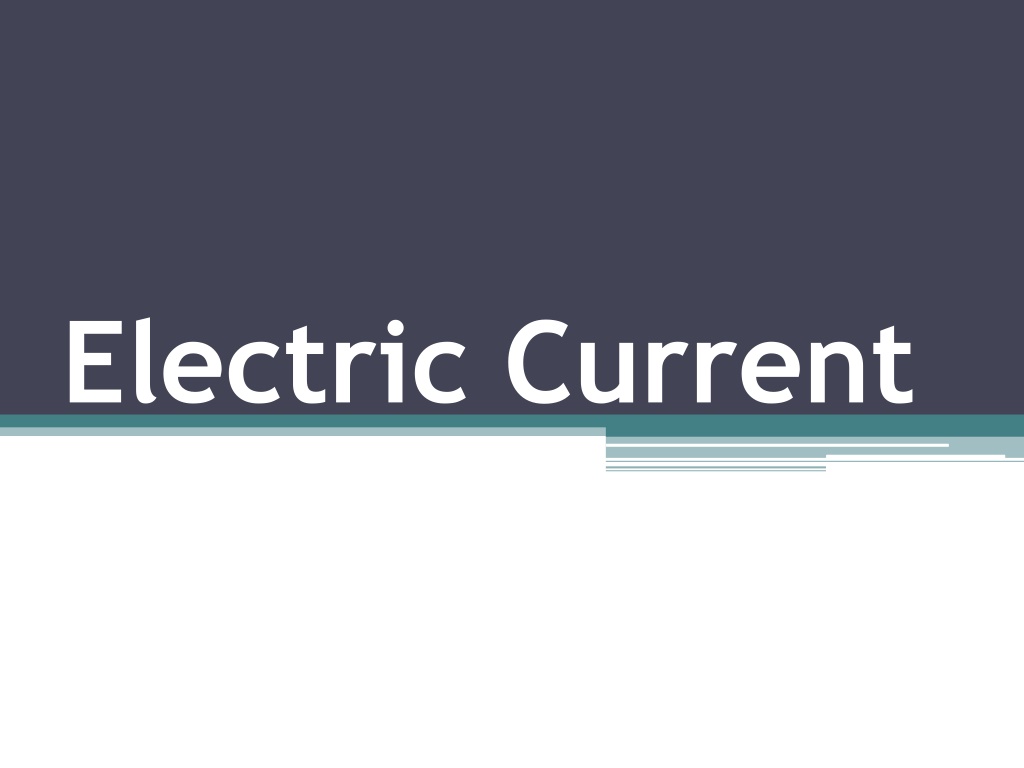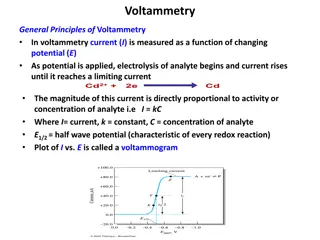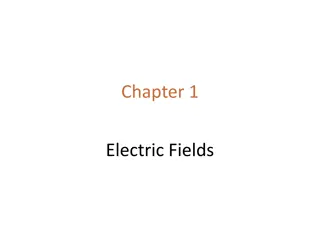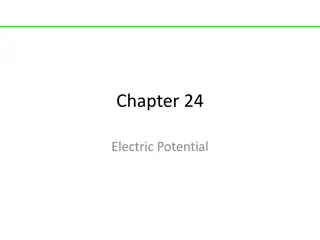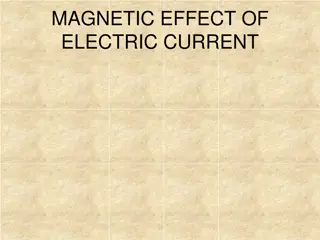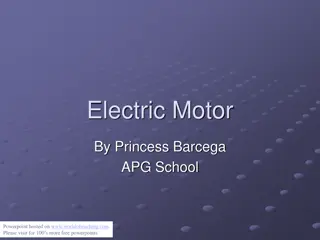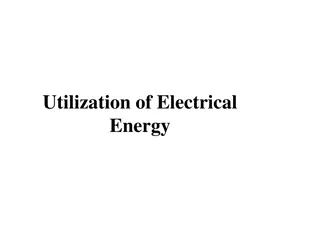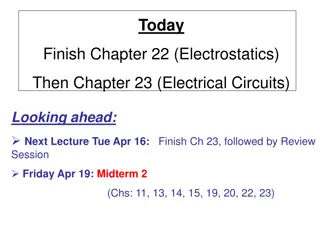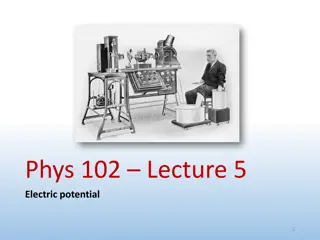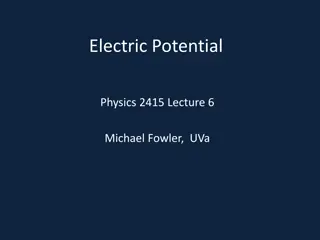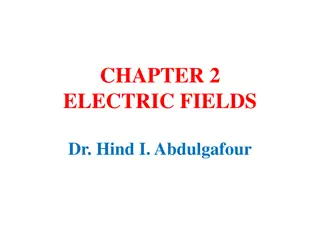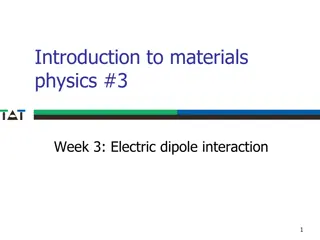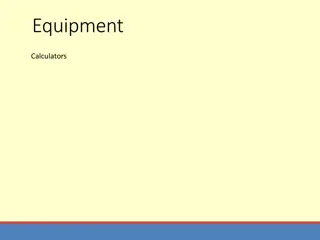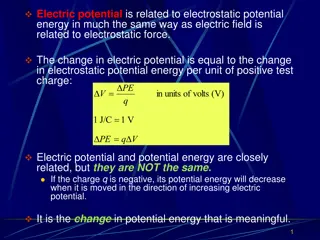Understanding Electric Current and Electric Potential Difference
Electric current is the flow of electrons moving from one point to another, measured in amperes. The direction of current follows convention, even though electrons actually move oppositely. Current is calculated using the total charge passing a point in a given time. Electric Potential Difference (EPD) is the work required per unit charge to move a positive charge between points in an electric field. These concepts are essential in understanding electricity and circuits.
Download Presentation

Please find below an Image/Link to download the presentation.
The content on the website is provided AS IS for your information and personal use only. It may not be sold, licensed, or shared on other websites without obtaining consent from the author. Download presentation by click this link. If you encounter any issues during the download, it is possible that the publisher has removed the file from their server.
E N D
Presentation Transcript
When electric charges (electrons) move from one place to another, they are known as an electric current Current is defined as the amount of charge passing a point in a given time
Current = Flow of Electrons
Calculating Current I = Q t I current (Amperes A or C/s) Q total charge (C) t time (s)
Current Video https://www.youtube.com/watch?v=8gvJzrjwjds
Direction of Current Convention says current moves from the positive terminal of a battery to the negative terminal In actual circuits, electrons move from the negative terminal to the positive terminal We stick with convention so we get a positive current value
Measuring Current We measure current using an ammeter that must be placed in series with (in the path of) the current Current is measured in amperes (A)
Sample Problem If 8.44 x 109electrons pass a point in 10 s, what is the current produced by this flow of charges? Ans: 1.35 x10-10A
Solution N = 8.44 x 109 electrons t = 10 s Q = Ne = (8.44 x 109)(1.60x10-19) = 13.5 x 10-10C I = Q = 13.5 x 10-10= 1.35 x 10-10A t 10
Electric Potential Difference
What is EPD? Electric Potential (V) the amount of work required per unit charge to move a positive charge from one point to another in an electric field Since work is energy, think of EPD as the amount of energy given to an electron due to an electric field
We usually refer to EPD as Voltage which is from the unit for Electric Potential Difference the VOLT
Voltage = Energy
Voltage Videos https://www.youtube.com/watch?v=F1p3fgbDnkY
Measuring Voltage Measured using a voltmeter that is placed in parallel
Calculating EPD V = W Q V Electric Potential Difference (V) W Work required to move a charge from one point to another in an electric field (J) Q amount of charge moved (C)
As charged electrons pass through a circuit they lose energy as work is done (ie. Travelling through a light bulb) E = V I t V Electric Potential (V) I Current (A) t time (s)
Sample Problem How much energy is used by a light bulb, that has a current of 1.0A and an electric potential of 120V, that is left on for 3 minutes? Ans: 21.6 kJ
Solution I = 1.0A V = 120V t = 3 hr = 3*60 = 180s E = ? E = V I t E = (120V)(1.0A)(180s) E = 21600 J E = 21.6 kJ
Homework 1) If 4.5 x 1025 electrons pass a point in 0.82s what current is flowing in the circuit? If 6 A of current passes through a light, how many electrons will pass through in 1 min? If the voltage difference across the light is 120V. How much light energy will the bulb give off? Create an analogy that relates current and voltage to a hydroelectric dam. Ovens are typically based on a 240V circuit with 30 A of current. A light bulb is based on a 120V circuit with 0.50A of current. How much more energy will an oven use over the course of an hour? Does this make sense? Why? Is it possible to have a condition where an electrical voltage exists, but no electric current exists? Conversely, is it possible to have a condition where an electric current exists without an accompanying voltage? Explain your answers, and give practical examples where the stated conditions are indeed possible. 2) 3) 4) 5)
Homework Create a chart that summarizes the circuit symbols for the following circuit parts: Resistor Variable resistor Switch (closed and open) Light bulb Cell Battery of 3 cells Motor Switch Ammeter Voltmeter Fuse
Its not the volts, its the amps https://www.youtube.com/watch?v=8xONZcBJh5A
